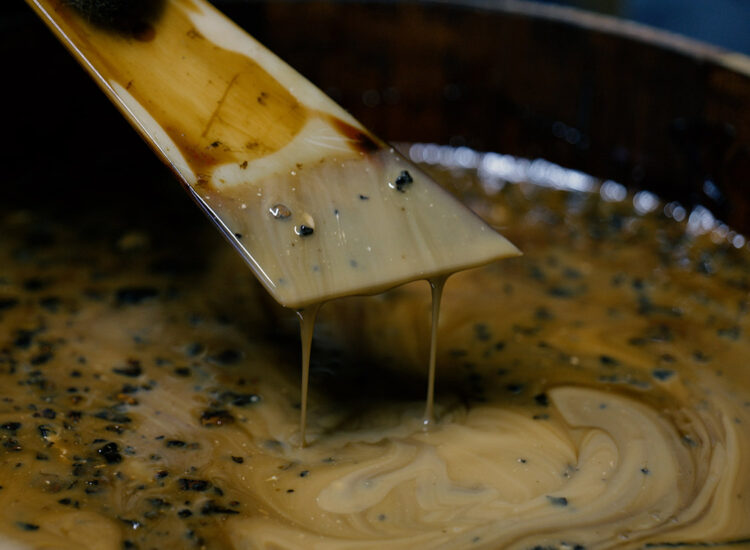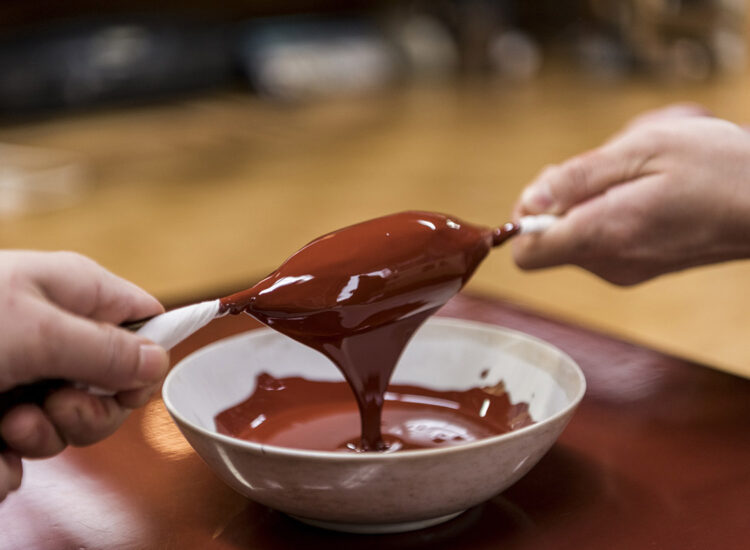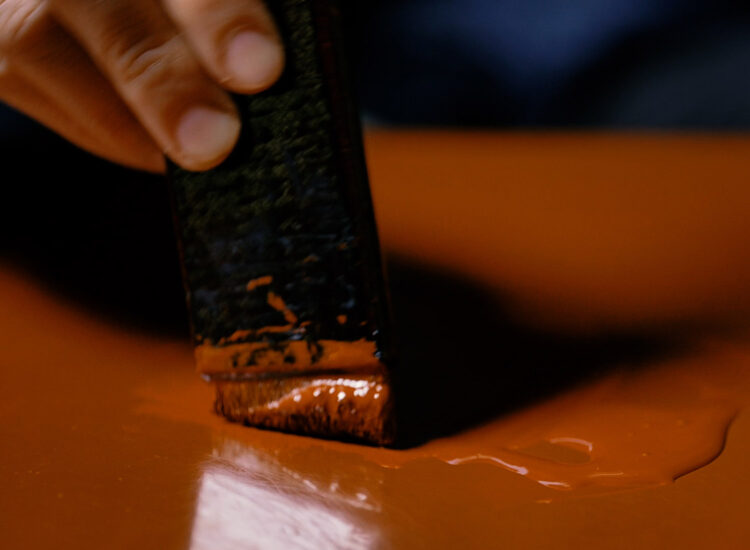
The Production of Joboji Lacquerware



Joboji Lacquerware is characterized by a matte texture created by applying an abundance of locally harvested lacquer. The lacquer is applied over and over again, taking time and effort to achieve both beauty and robustness.
Freshly harvested lacquer is called arami-urushi (rough lacquer), and after the debris is removed, it is called kiurushi (raw lacquer). The ki urushi can be used as a base coat, but at the Tekiseisha studio, the raw Joboji lacquer is refined to that it is suitable for the base, middle, and top coat.
The first step in the refining involves mixing the lacquer to make its components uniform. After that, the lacquer goes through a process where it is heated to remove excess water to produce clear, candy-colored suki-urushi (transparent lacquer). Black lacquer is made by adding iron powder during the stage where it is heated. The refined transparent lacquer has a high refractive index of light and a deep luster.
The next step after refining is lacquering. The first step is to harden the wood by soaking it with plenty of raw lacquer, smoothing the top surface, and increasing the strength by repeatedly applying and polishing the lacquer. The final stage is the top coating, which is done in a special room to prevent dust and dirt from sticking to the surface, leaving no trace of brush marks. The properties of lacquer vary depending on the time of year and the lacquer tapper who collects it. The lacquer painter who applies the lacquer also understands its properties and uses it with great care.
After the lacquer is applied, it is hardened in a box called a furo where the temperature and humidity are kept constant. In this way, urushiol, the main component of lacquer, is oxidized and hardened. The result is a sturdy vessel that is resistant to acids, alkalis, salts, and alcohol and has excellent water antiseptic properties.
The real appeal of lacquerware is that it becomes more lustrous and transparent as it is used for five to ten years. Even if a part of the lacquer is chipped or peeling off, it can be repainted and be used for generations to come.
Photo provided by Ninohe City
